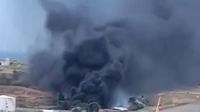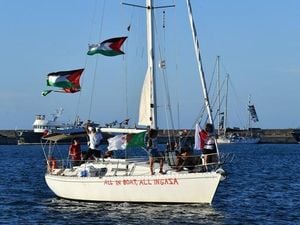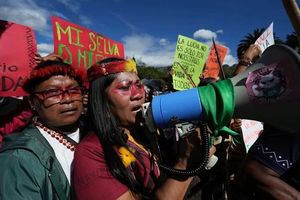On September 24, 2025, Venezuela’s busiest air hub, Simón Bolívar International Airport in Maiquetía, was rocked by a devastating aviation accident when a Learjet 55, registered YV3440, crashed shortly after takeoff. The crash, which occurred at approximately 12:52 local time (16:52 GMT), sent thick plumes of black smoke billowing above the tarmac and prompted an immediate and robust emergency response, temporarily suspending airport operations and sending shockwaves through the country’s aviation community.
According to the National Institute of Civil Aviation (INAC), the Learjet 55 was departing the airport when it encountered trouble and plummeted to the ground in a fiery explosion. As reported by multiple outlets, including Times Now and India Today, four people were onboard the jet at the time of the crash. Emergency protocols were swiftly activated: firefighters, rescue teams, and medical personnel rushed to the scene, battling flames and smoke to reach the wreckage.
Amid the chaos, two passengers were pulled from the remains of the aircraft and immediately transported to nearby medical facilities. Their condition, as confirmed by INAC and echoed by Times Now, was reported as stable. Tragically, the pilot and co-pilot did not survive the accident. Authorities are in the process of verifying the identities of the deceased before repatriation, a process that underscores the somber aftermath of the incident.
Eyewitness videos quickly circulated on social media, capturing the harrowing moments after the crash. The footage showed large, dark clouds of smoke rising from the airport’s runway, underscoring the intensity of the explosion that followed the jet’s impact. Emergency crews, according to India Today, managed to bring the situation under control within minutes, extinguishing the flames and securing the crash site. Despite the severity of the event, preliminary reports from INAC and other agencies indicated that, remarkably, there was no damage to airport facilities and no fatalities among airport staff or bystanders.
The crash forced a temporary suspension of operations at Simón Bolívar International Airport, Venezuela’s primary international gateway located just outside Caracas. Several flights were diverted, and both domestic and international routes were disrupted as authorities worked to ensure the safety of passengers and staff. According to India Today, airport operations resumed only after the crash site was cleared and deemed secure.
As the dust settled, attention turned to the cause of the accident. The National Institute of Civil Aviation quickly established an Accident Investigation Board to examine the technical, operational, and environmental factors that may have contributed to the crash. Preliminary findings, as reported by India Today and Times Now, suggest that adverse weather conditions—particularly strong winds and sudden shifts in weather, a known challenge in the Caracas area—could have played a significant role.
Weather reports from the day of the crash indicated possible wind disturbances around the airport, a factor that investigators are scrutinizing as they piece together the sequence of events leading up to the tragedy. The Learjet 55, a mid-size private jet manufactured by Bombardier, was no stranger to international travel. Flight tracking data from Flightradar24 revealed that the aircraft had recently operated flights within Venezuela and to neighboring countries such as Panama and Cuba, highlighting its active presence in the region’s airspace.
While the investigation is ongoing, the swift and coordinated response of the airport’s emergency services has drawn praise. The successful rescue of two passengers from the wreckage, despite the intense fire and hazardous conditions, is a testament to the efficacy of the airport’s safety protocols and the professionalism of its first responders. As India Today noted, “Emergency crews brought the situation under control within minutes,” a critical factor in minimizing further loss of life.
The crash also serves as a stark reminder of the inherent risks in aviation, particularly in regions prone to unpredictable weather. Simón Bolívar International Airport, as Venezuela’s most important air hub, is a lifeline for commercial, business, and diplomatic travel. Any incident at the airport reverberates throughout the country’s transportation network, which is already strained by economic and logistical challenges.
Authorities have emphasized their commitment to a thorough and transparent investigation. As stated by the National Institute of Civil Aviation, the Accident Investigation Board will examine all available evidence, including flight logs, weather data, maintenance records, and eyewitness accounts. The goal is to determine not only what caused the crash but also what steps can be taken to prevent similar tragedies in the future.
In the meantime, the two survivors continue to receive medical care and support, while the families of the deceased await answers and closure. The broader aviation community is watching closely, hoping that the lessons learned from this incident will strengthen safety measures and emergency preparedness at airports across Venezuela and beyond.
For now, the crash of the Learjet 55 at Simón Bolívar International Airport stands as a somber chapter in Venezuela’s aviation history. It is a story marked by tragedy, resilience, and the relentless pursuit of answers in the face of adversity. As investigators work to unravel the mystery of what went wrong, the nation mourns its loss and looks ahead, determined to ensure that its skies remain as safe as possible for all who travel them.




